Award-winning photojournalist Brendan Hoffman ’02 documents ordinary lives caught up in extraordinary circumstances
The Other Side of the Lens
Award-winning photojournalist Brendan Hoffman ’02 documents ordinary lives caught up in extraordinary circumstances
January 19, 2022
By
Sara Piccini
Photography By
Brendan Hoffman ’02
Editor's note: This article was written in October 2021, before Russia's invasion of Ukraine. Hoffman continues to document the conflict in Ukraine. The images below may be distressing for some readers.
In 2005, seeking to build his portfolio as a photojournalist, Brendan Hoffman ’02 took off for an unlikely destination — the Republic of Azerbaijan.
He had originally planned to accompany his former mentor from the William & Mary gymnastics program, the late Dr. Winfred “Doc” Ward ’54, to photograph Ward’s medical mission trip with the organization Physicians for Peace.
“Ukraine had just had its Orange Revolution, Georgia had been through a democratic revolution — this wave of revolutions was taking place in countries of the former Soviet Union,” Hoffman says. “Azerbaijan had elections coming up, and there was talk of the same thing happening there.
“It was just my luck that the trip was planned to coincide exactly with when the elections were happening. But for that very same reason, the group decided to postpone it,” he says. “At that point I decided, ‘I’m going anyway.’ In a state of hubris, I got a visa and went.”
The experience marked the start of his photographic journey portraying individuals caught up in circumstances beyond their control — forced migration, armed conflict, economic upheaval — revealing, in Hoffman’s words, “the remarkable human ability to adapt and carry on.”
His work has garnered international publication and acclaim. He is most proud of receiving the Philip Jones Griffiths Award in 2018, named for the late photojournalist renowned for his Vietnam War coverage.
“What I do is instinctive in a way,” he says. “From that initial trip I took to Azerbaijan, it’s the thing that came naturally to me. I don’t know if I could do something different if I tried.”
‘The Mistakes Are Free’
Hoffman’s interest in photography first developed in high school when he took a black-and-white photography class, learning to develop his own film and print photos in the darkroom. He had no intention of pursuing it as a career, however, and entered William & Mary as a physics major.
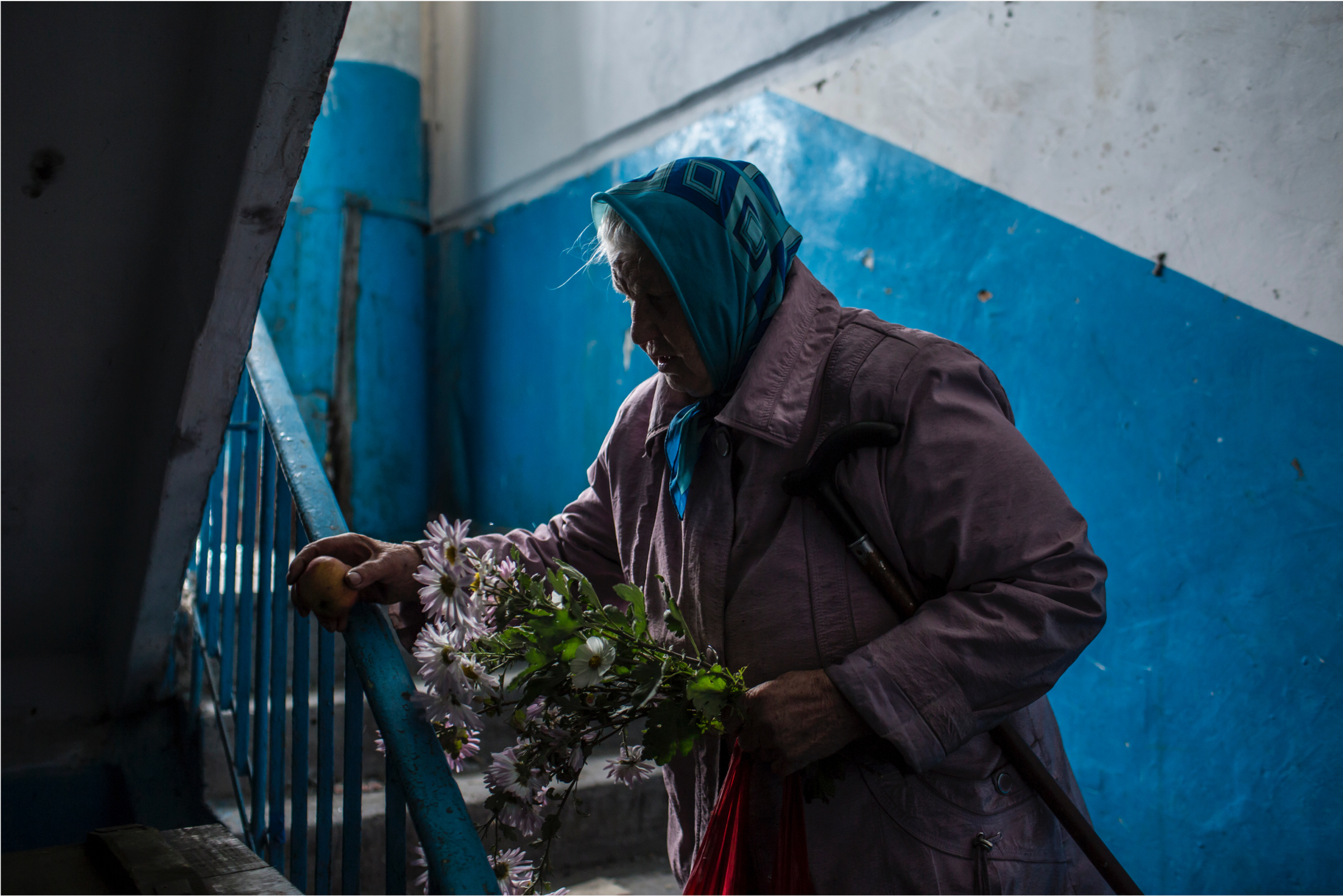
Donetsk, Ukraine, October 2014. Nadezhda Panasyk in the stairwell of her apartment building, used by Russian-backed forces in the war in eastern Ukraine. “For civilians living near the demarcation line, conflict is like the weather, an uncontrollable condition of the environment with which one must contend daily,” Hoffman writes.
“That did not last long beyond my first semester,” he says with a laugh. “Then I switched over to art history.” At the time, William & Mary did not offer a single course in photography. “But I did look at a lot of very good paintings,” Hoffman says. “The use of light and composition and all that gets burned into your brain, and I’m still tapping into that.”
He completed a senior thesis on the role of art in the anti-Vietnam War movement, bringing together his interests in art and politics for the first time.
After graduating from William & Mary, Hoffman moved to Washington, D.C., to work for a nonprofit and continued practicing photography as a hobby. His parents had bought him an early-model point-and-shoot digital camera as a Christmas gift, which gave him the opportunity to experiment. He soon moved up to more sophisticated equipment.
“Technology was changing at exactly the right time for me. The first proper digital SLRs that didn’t cost $10,000 were starting to come out,” he says. “I don’t think I’d be a photographer if it weren’t for that, because digital photography allowed me to make a ton of mistakes. Once you’ve got the camera, the mistakes are free.”
As he grew more serious about a potential career in photography, Hoffman knew he had to create a body of work compelling enough to capture an editor’s eye.
“It was a little bit of luck and a little bit of shoe leather,” he says. “I self-assigned some of my early projects, paying out of my own pocket.” Because he was close to his W&M gymnastics teammates — they continue to remain in touch today — he got the idea to reach out to Doc Ward, resulting in his trip to Azerbaijan.
Through those efforts, Hoffman received his first speculative assignments. “In Washington, you’re elbow-to-elbow with 10 other photographers all the time,and they’re all very talented,” he says. “If the guys on either side of you both get a picture and you don’t, you quickly have to ask yourself why. It was like a free workshop every day.”
He became a regular on Capitol Hill and covered the presidential campaigns of 2008 and 2012. “I started meeting all the other photographers and through those connections getting hired, eventually by The New York Times and other publications,” he says. “It’s still hard to believe that it all worked out. I’m not sure I would have the guts to do it the same way now.”
‘The Sky Is Blue but the Sun Isn't Shining’
In the summer of 2013, Hoffman decided to leave the United States and move to Moscow.
“I had done everything that a freelance photographer will get the chance to do in Washington. I needed to expand my portfolio and my skills,” he says. “I wanted to not just photograph the people in D.C. talking about things happening elsewhere in the world, but to go there and see it for myself.”
Soon after Hoffman’s arrival in Russia, pro-democracy demonstrations began in Ukraine, focused in Kyiv’s Maidan central square. Hoffman made his way to Kyiv, photographing the increasingly violent clashes between citizens and police.
Although pro-democracy forces succeeded in ousting Ukraine’s corrupt president, Russia took advantage of the nation’s instability, invading Crimea and sparking an insurgency in the Donbas region in eastern Ukraine.
“Since I had already been photographing this chapter of Ukraine’s history, I thought that there was value in continuing,” Hoffman says. He set up permanent residence in Kyiv and has been photographing the ongoing war in eastern Ukraine for more than seven years.
Hoffman will publish a book of his Ukraine photographs in summer 2022. The title — “The Sky Is Blue but the Sun Isn’t Shining” — is a quote from a young girl he met living on the front line in Donbas, describing her life. “The subtext is about the nature of truth and disinformation, Ukraine being where a lot of these modern scourges were first road-tested.”

A refugee apartment in Azerbaijan, 2006. Hoffman first visited the country in 2005, and has continued to document the ongoing conflict between Azerbaijan and Armenia over the disputed region of Nagorno-Karabakh.
‘People Aren't MetAphors’
In July 2020, Hoffman had his first feature story published in National Geographic magazine. His photos document the growing dispute between India and Pakistan over the water resources of the Indus River, exacerbated by climate change.
As with his earliest photos from Azerbaijan, the images capture the essence of individuals coping with disruption, dislocation and uncertainty. Gaining such intimacy with his subjects requires a delicate balancing act, Hoffman says.
“You can’t come in with an agenda,” he says. “You have to be open and honest and not hide what you’re trying to do. It’s human nature. People can intuit if you can be trusted.”
Striving to maintain objectivity is also critical.
“You have to be really willing to see things from other people’s perspective — to get beyond the politics and rhetoric and see people as individuals and try to understand them on that level,” he says. “People aren’t metaphors or representatives of something else, they’re just who they are.”
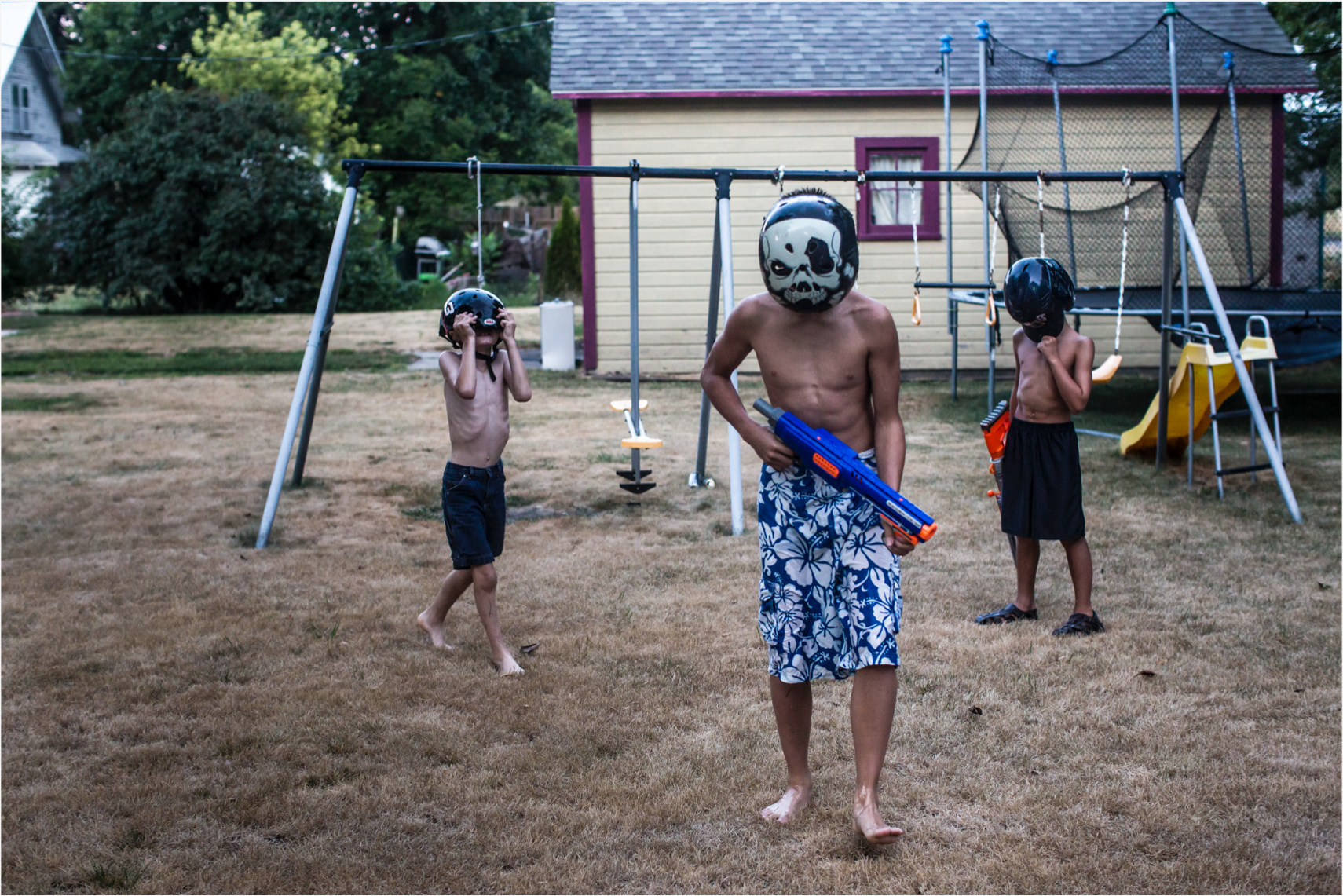
Webster City, Iowa, July 2012. Jesse Hubbard, James Hill and Reese Jensen play with toy guns.
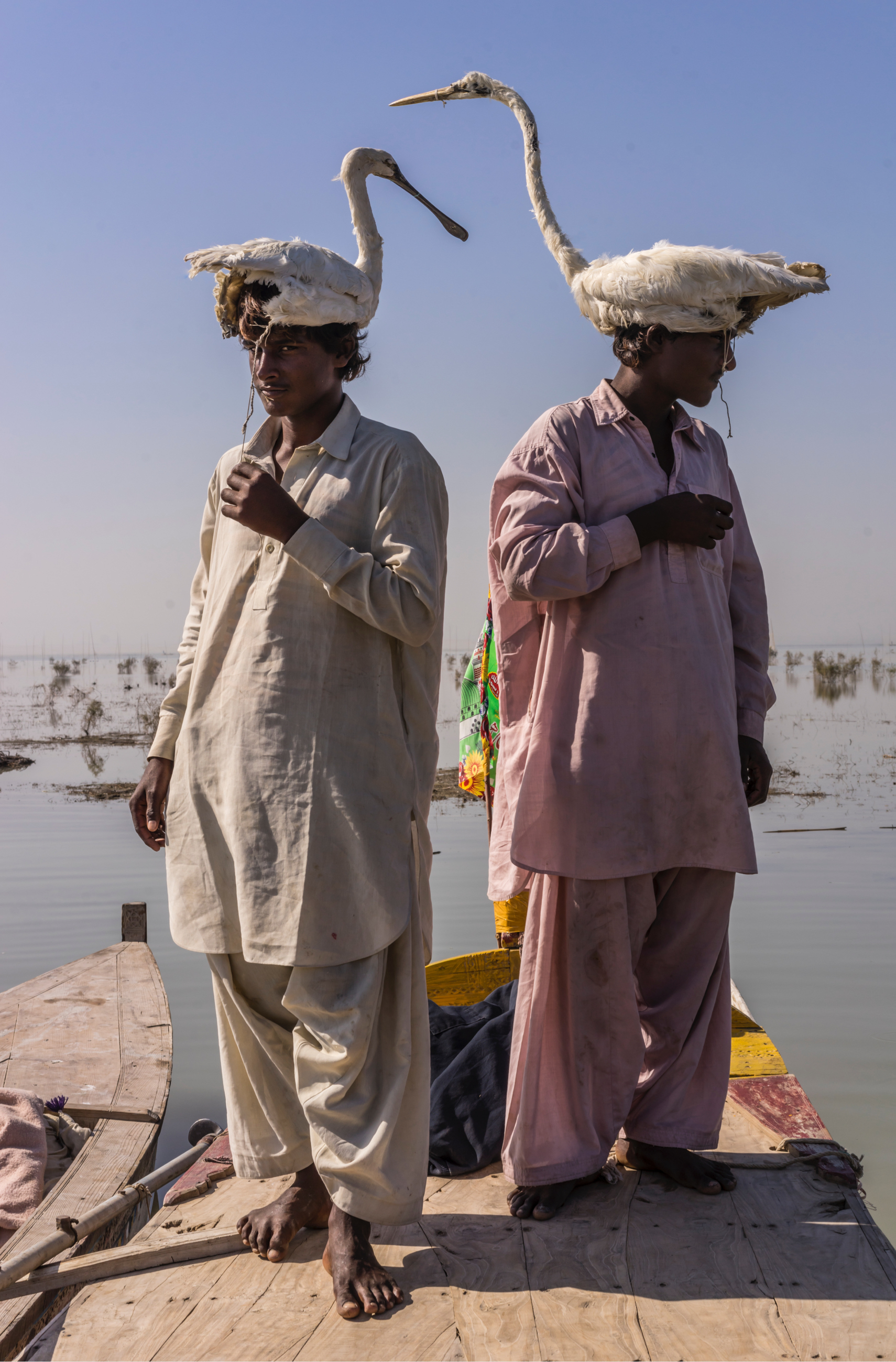
Lake Manchar, Pakistan, November 2017. Residents of the lake’s floating village pose with artificial birds, which they use for hunting. Hoffman spent two years documenting life along the Indus River, from its source in Tibet to the Arabian Sea. His photographs were featured in the July 2020 issue of National Geographic magazine.
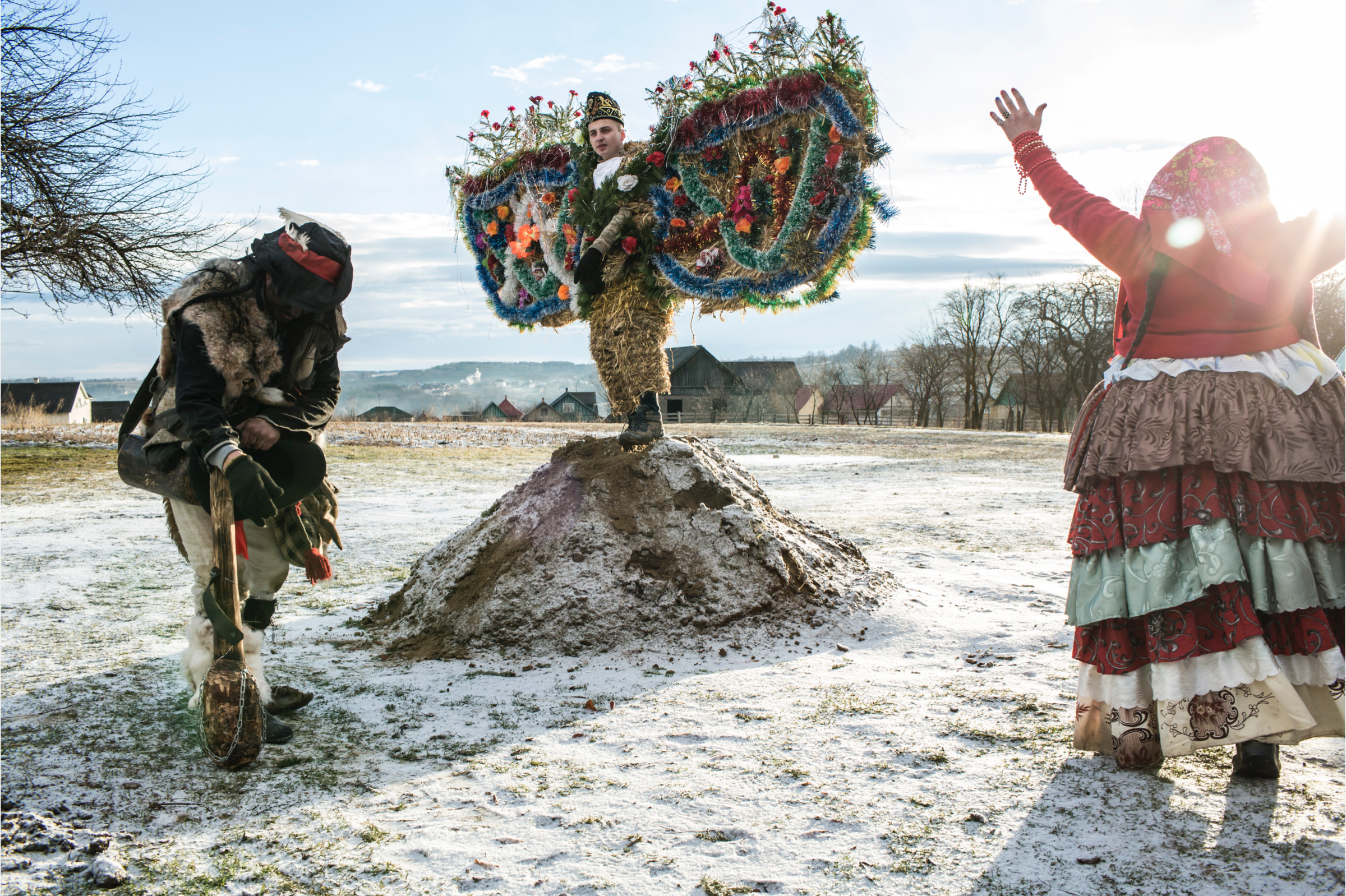
Krasnoilsk, Ukraine, 2016. Petro Dragun (center), in an elaborate bear costume, celebrates the annual Malanka New Year’s festival. In 2018, Hoffman was awarded a Fulbright Scholarship to document Ukraine beyond the front line.

Kyiv, Ukraine, 2018. Sunday services at the Refectory Church of Saints Anthony and Theodosius at the Kyiv-Pechersk Lavra complex, the crown jewel of the Ukrainian Orthodox Church, which is seeking independence from Moscow’s patronage.
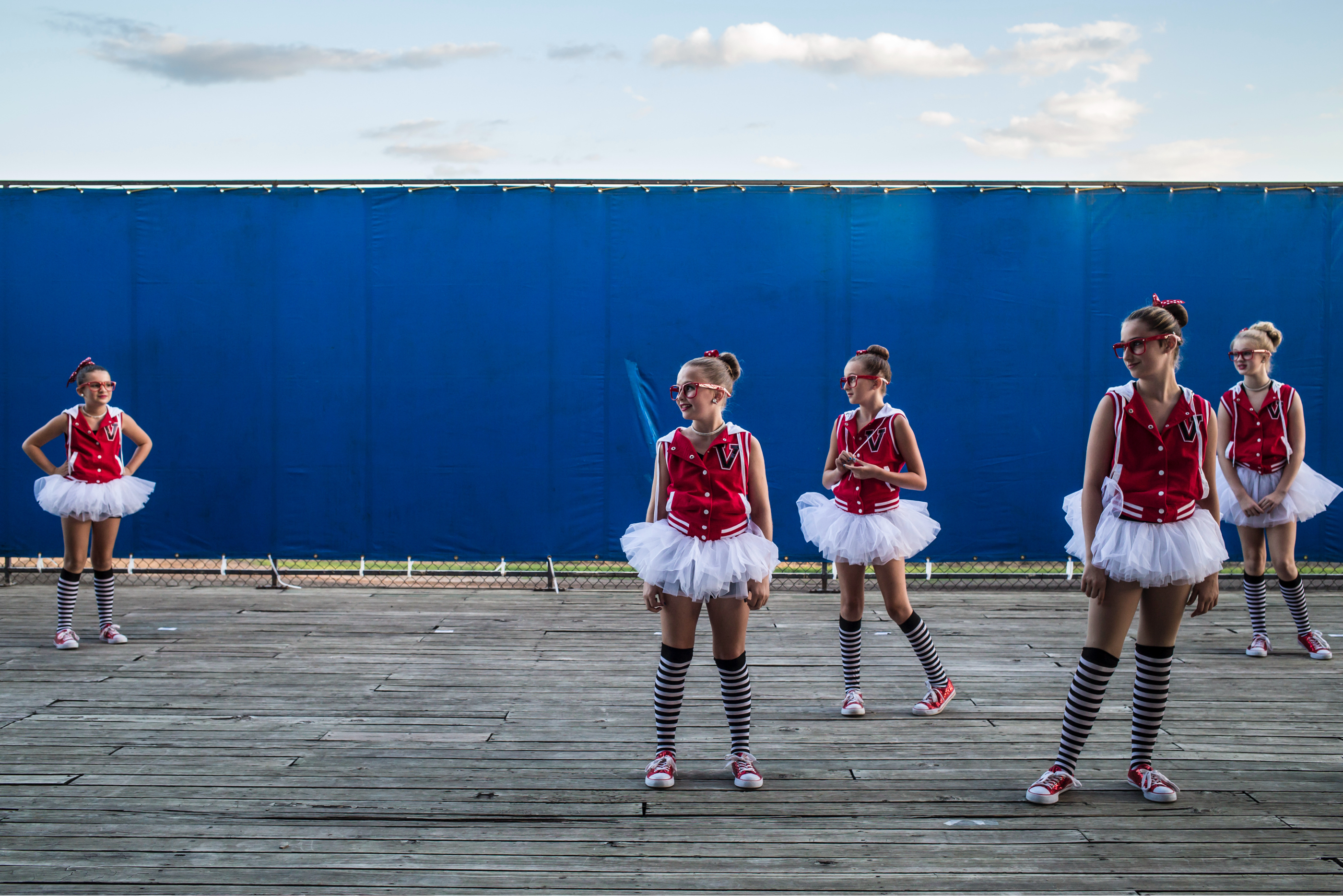
Webster City, Iowa, July 2013. Girls prepare to perform a dance routine at the Hamilton County Fair. Hoffman began photographing in the town in 2011, after the local Electrolux factory closed and many hundreds of people were laid off. “Intellectually, I could understand the people I met; yet emotionally I struggled to bridge the gap,” he writes. “As much as anything, to do so became the goal of my work.”
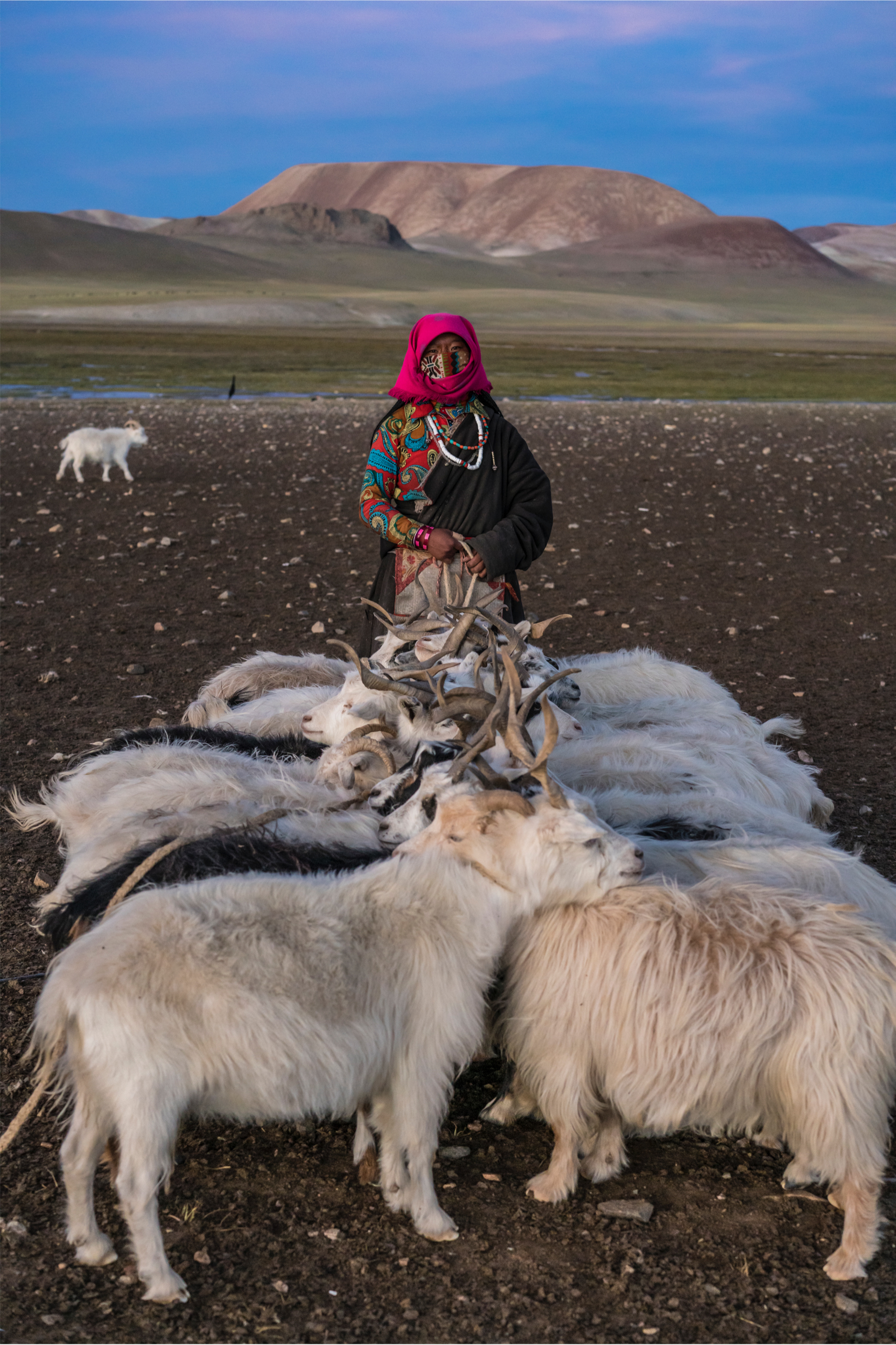
Tibet, 2019. Gudong, 19, poses for a portrait before milking goats at her nomad camp along the Indus River summer pastureland, which residents refer to as Yakra Changma.
Photographs are inherently somewhat ambiguous, which neatly reflects my desire to embrace complexity and push back against the human tendency toward oversimplification. My favorite pictures are like little poems, packing a lot of ideas and feelings into a tight space with no stray marks.
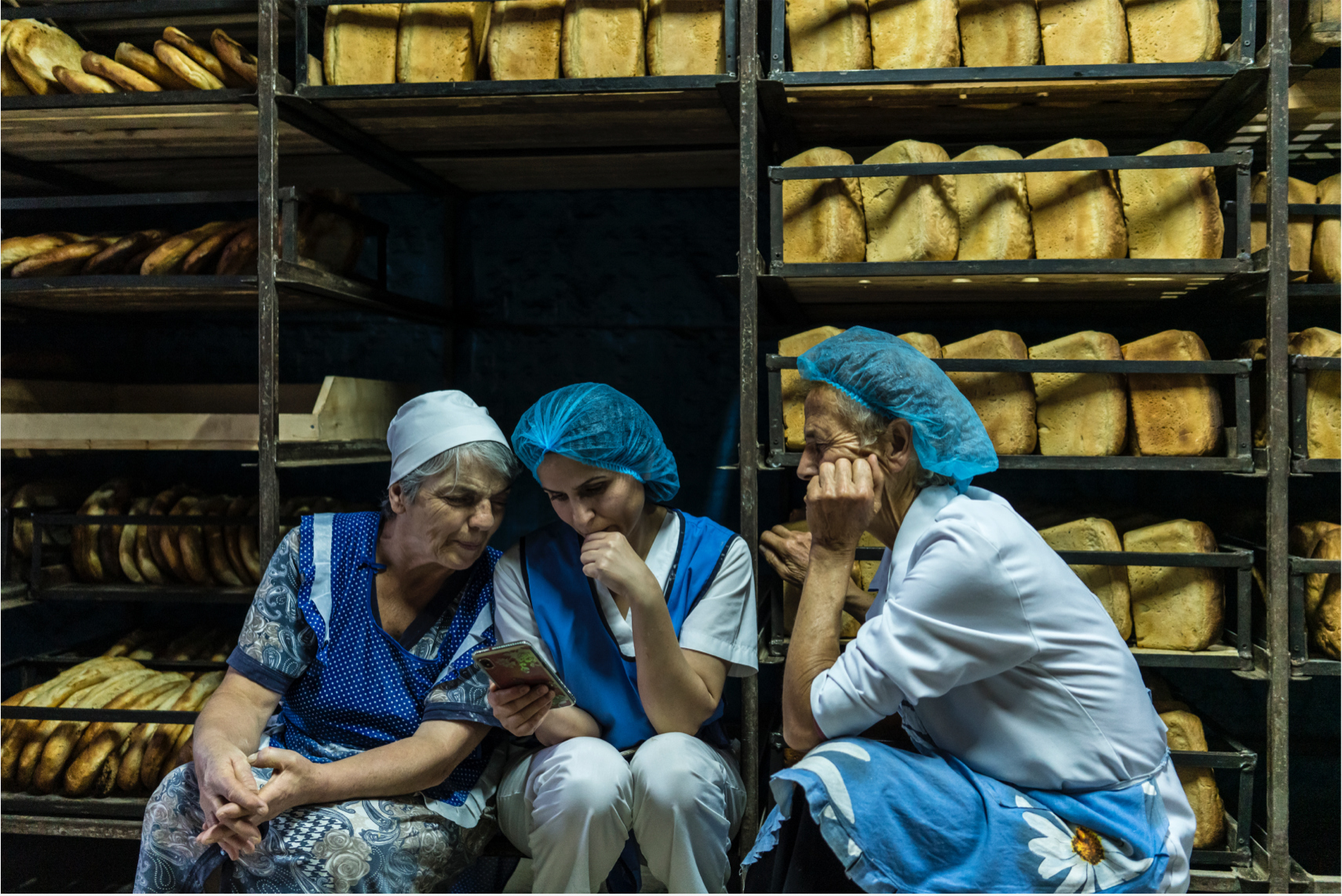
Karavy Bread Factory, Nagorno-Karabakh, October 2020. Taking a break from baking bread for the Armenian military, workers watch an online video report about clashes between Armenian and Azerbaijani troops.
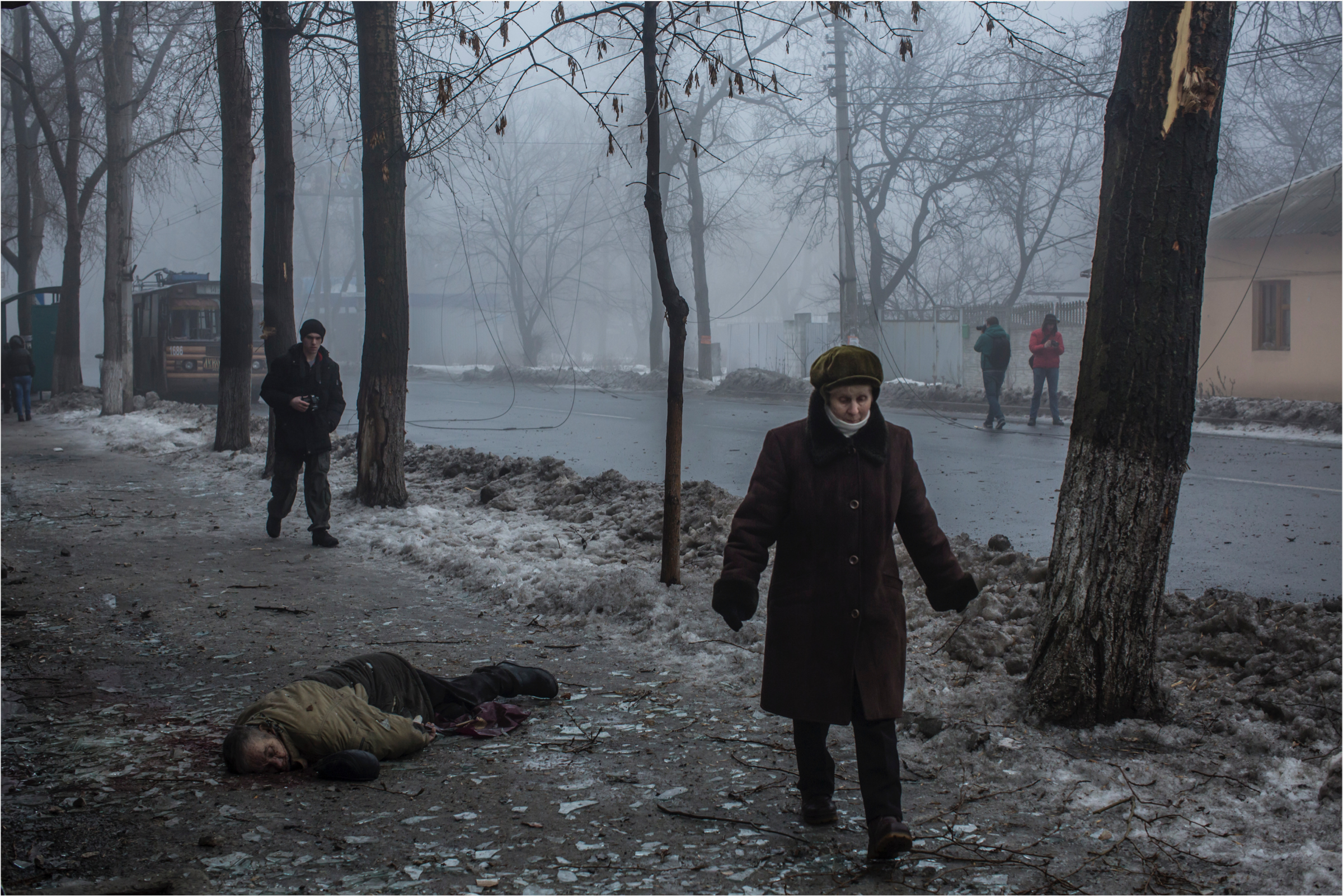
Donetsk, Ukraine, 2015. A woman walks past the body of a man killed on the sidewalk when a rocket or mortar struck the road, one of an estimated 14,000 casualties from the Ukraine-Russia conflict.
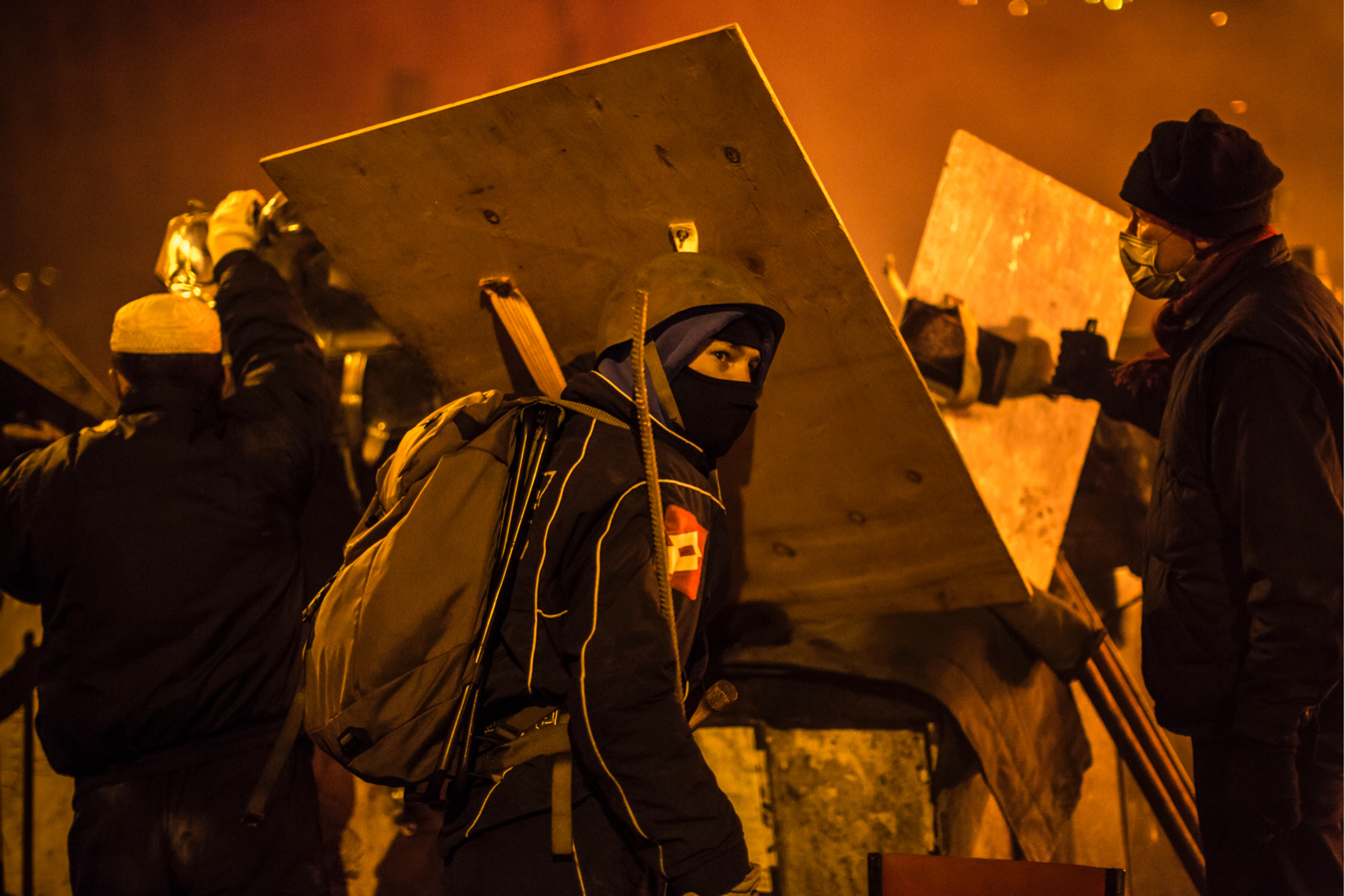
Kyiv, Ukraine, February 2014. Anti-government protesters guard the perimeter of Independence Square, known as Maidan.
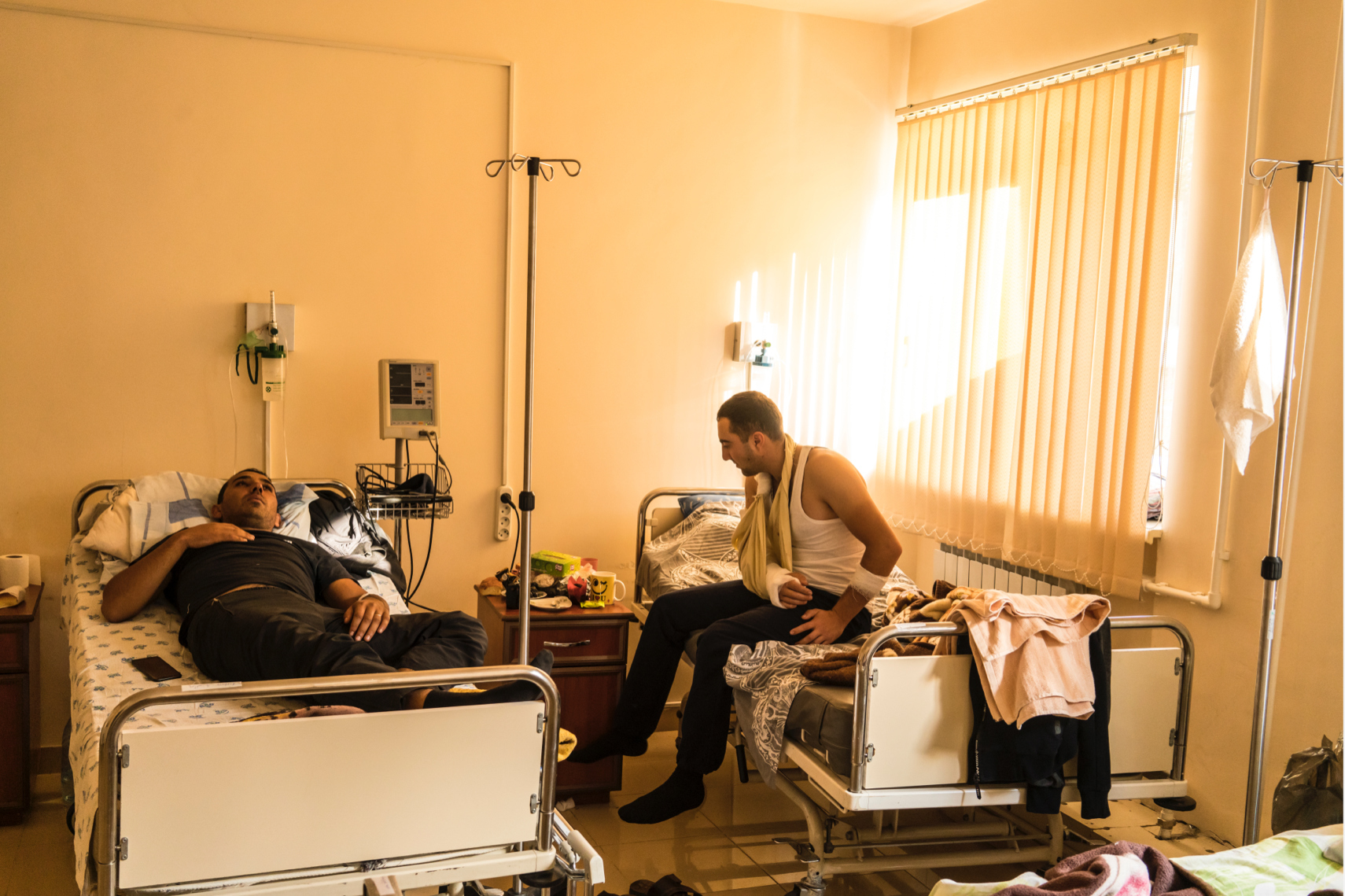
Children’s Medical Center, Nagorno-Karabakh, September 2020. Armenian soldiers wounded in heavy fighting sit in a hospital room in the regional capital of Stepanakert.
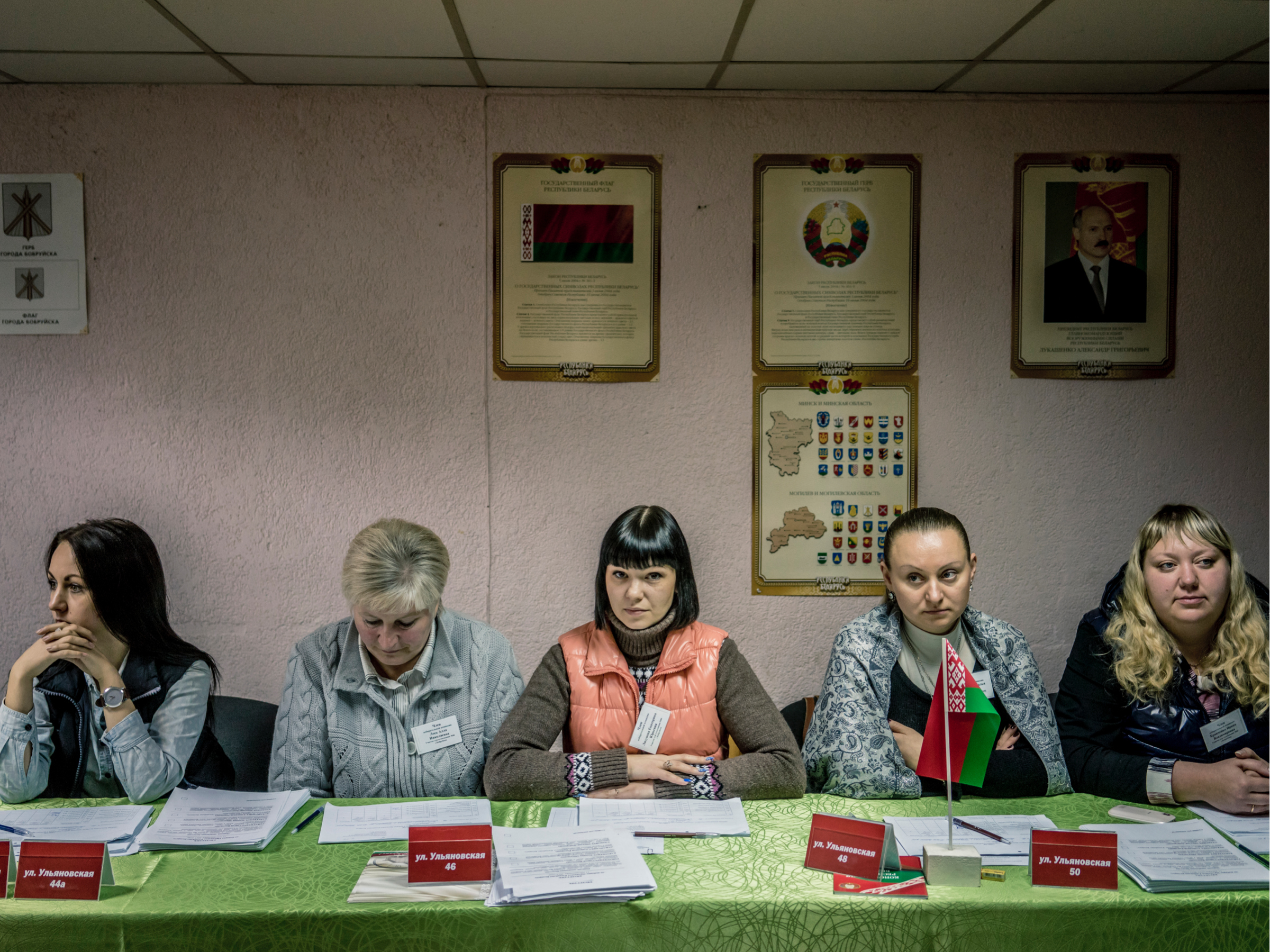
Babruysk, Belarus, 2015. Election officials inside a polling station. President Alexander Lukashenko was elected to a fifth term with a reported 83.5% of the vote, which international monitors said did not meet democratic standards.
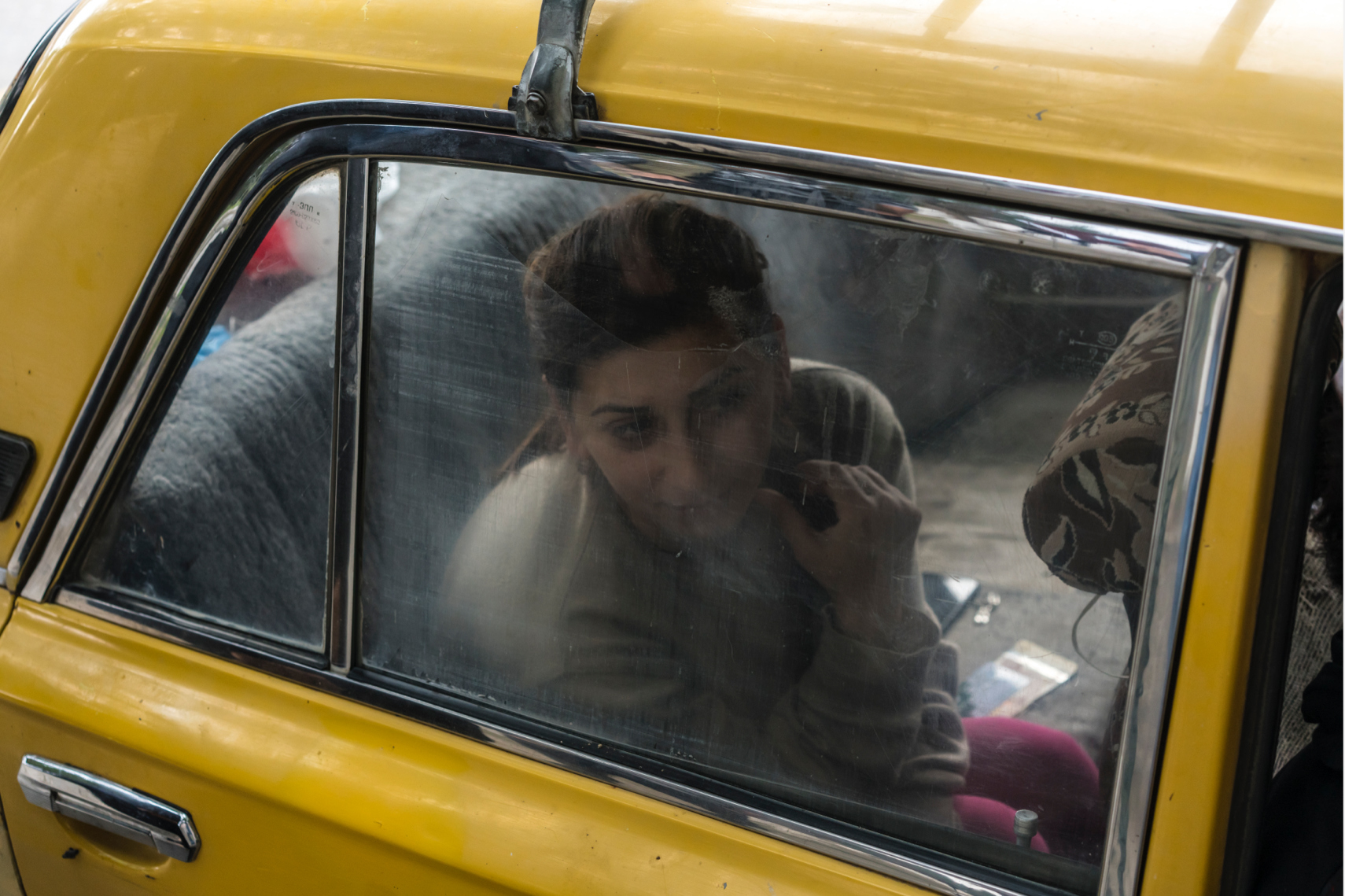
Nagorno-Karabakh, September 2020. Anush Poghosyan prepares to leave her frontline village after heavy shelling several days earlier.
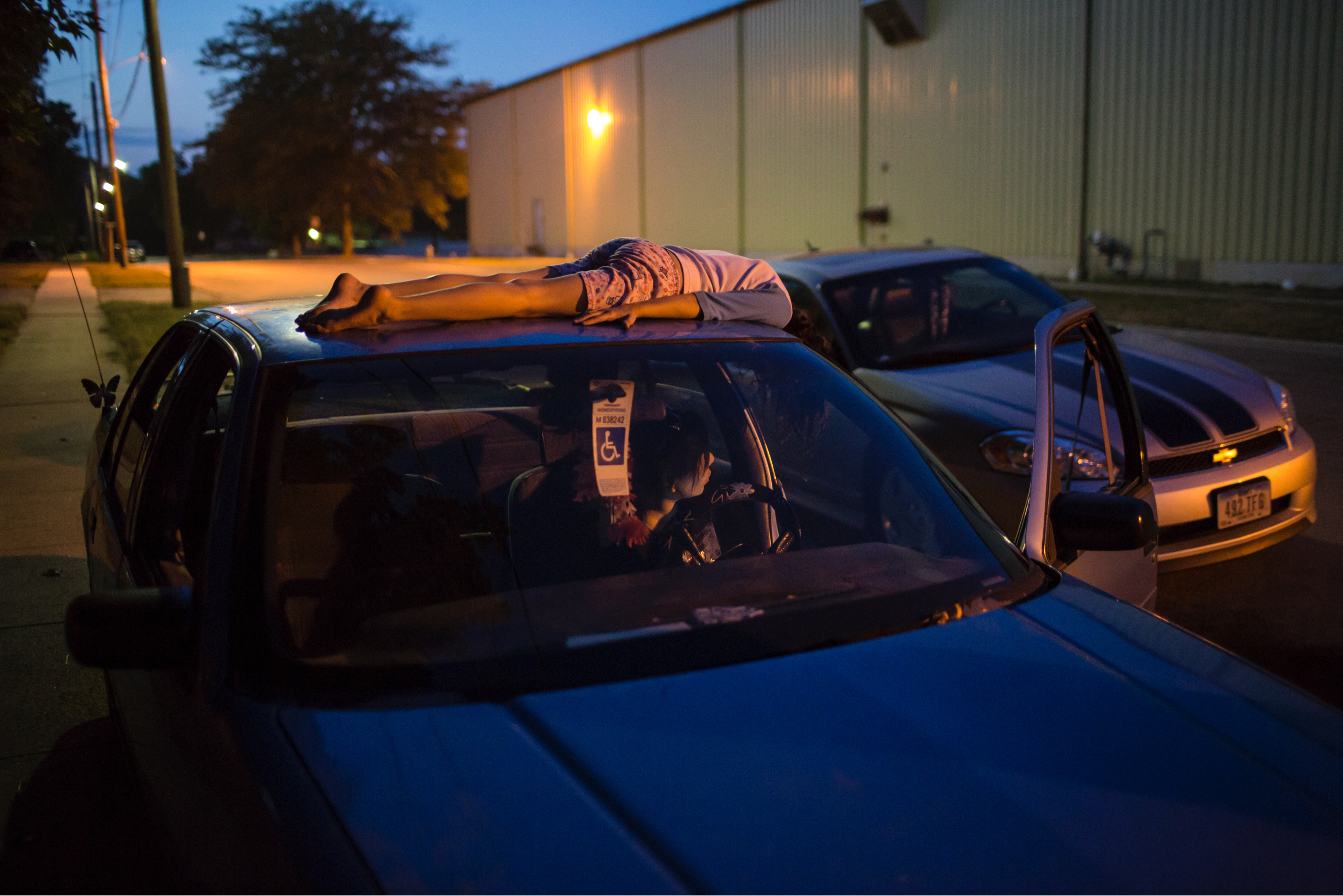
Webster City, Iowa, July 2012. A girl lies on top of a car on a hot summer night.